Related Research Articles

Abbot is an ecclesiastical title given to the male head of a monastery in various Western religious traditions, including Christianity. The office may also be given as an honorary title to a clergyman who is not the head of a monastery. The female equivalent is abbess.
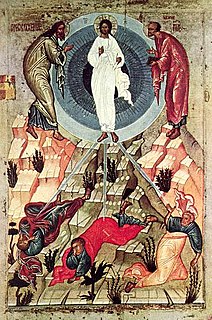
Bernard of Clairvaux, venerated as Saint Bernard, was a Burgundian abbot and a major leader in the revitalization of Benedictine monasticism through the nascent Cistercian Order.

Year 1165 (MCLXV) was a common year starting on Friday of the Julian calendar.
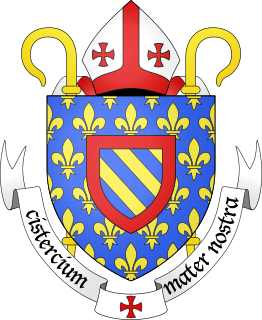
The Cistercians, officially the Order of Cistercians, are a Catholic religious order of monks and nuns that branched off from the Benedictines and follow the Rule of Saint Benedict. They are also known as Bernardines, after the highly influential Bernard of Clairvaux or as White Monks, in reference to the colour of the "cuculla" or cowl worn by the Cistercians over their habits, as opposed to the black cowl worn by Benedictines.
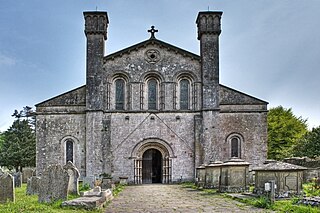
Margam Abbey was a Cistercian monastery, located in the village of Margam, a suburb of modern Port Talbot in Wales.
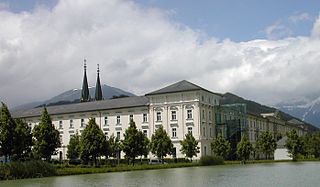
Admont Abbey is a Benedictine monastery located on the Enns River in the town of Admont, Austria. The oldest remaining monastery in Styria, Admont Abbey contains the largest monastic library in the world as well as a long-established scientific collection. It is known for its Baroque architecture, art, and manuscripts.

The Abbey of Saint Victor, Paris, also known as Royal Abbey and School of Saint Victor, was an abbey near Paris, France. Its origins are connected to the decision of William of Champeaux, the Archdeacon of Paris, to retire to a small hermitage near Paris in 1108. He took on the life, vocation and observances of the Canons Regular, and his new community followed the Augustinian Rule.
Gottfried is a masculine German given name. It is derived from the Old High German name Godafrid, recorded since the 7th century. The name is composed of the elements god- and frid-.
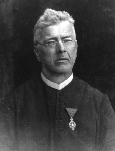
Gabriel Strobl was an Austrian Roman Catholic priest and entomologist who specialised in Diptera.

Herbert de Losinga was the first Bishop of Norwich. He founded Norwich Cathedral in 1096 when he was Bishop of Thetford.

Godfrey of St. Victor was a French monk and theologian, and one of the last major figures of the Victorines. He was a supporter of the study of ancient philosophy and of the Victorine mysticism of Hugh of St. Victor and Richard of St. Victor.

Bernhard Pez was an Austrian Benedictine historian and librarian.
Galfrid or Galfred is an Anglo-Norman variant of the name Geoffrey. It derives, like German Gottfried, from Old High German Godafrid, Old French Godefroy, and Old Norse Guðfriðr, meaning 'God's peace' or 'good protection', depending upon etymological interpretation. Variants, also used as synonymous with Gottfried, include Italian Goffredo and Middle French Gaufredi. The name is etymologically unrelated to, but was historically used interchangeably with, Welsh Gruffudd or Gruffydd in Wales.

Lilleshall Abbey was an Augustinian abbey in Shropshire, England, today located 6 miles (9.7 km) north of Telford. It was founded between 1145 and 1148 and followed the austere customs and observance of the Abbey of Arrouaise in northern France. It suffered from chronic financial difficulties and narrowly escaped the Dissolution of the Lesser Monasteries in 1536, before going into voluntary dissolution in 1538.
Ulrich IV of Pfannberg was Count of Pfannberg from 1287 until his death.

Igny Abbey or Val d'Igny Abbey is a Cistercian abbey located in Arcis-le-Ponsart, Marne, France. It was founded in 1128 for Cistercian monks, dissolved in 1791 during the French Revolution, re-established in 1876 for Trappist monks, destroyed in 1918, reopened in 1929 for Trappist nuns and modernised in 2008–12 to accommodate three or four pre-existing communities.
Sophia was the elder of the two daughters of King Béla II of Hungary. She was engaged to Henry, a son of Conrad III of Germany. She died as a nun in the Admont Abbey.
Jan Coxie was a Flemish painter and draughtsman mainly known for his landscape paintings. He was a member of the Coxie family of artists which played an important role in the development of Flemish painting in the 16th and 17th centuries.
Andrew of Saint Victor was an Augustinian canon of the abbey of Saint Victor in Paris, a Christian Hebraist and biblical exegete. His learning "reflects a great humanist culture ... put at the service of theology," while he emphasised the literal meaning of the Old Testament "to an extent not found elsewhere in the Middle Ages."

Josef Anton Stammel or, in some sources, Josef Thaddäus Stammel was an Austrian sculptor in the Baroque style.
References
- Stephan Borgehammar, Who Wrote the Admont Sermon Corpus - Gottfried the Abbot, his Brother Irimbert, or the Nuns pp. 47–51 in Jacqueline Hamesse (editor) De l'homélie au sermon: Histoire de la prédication médiévale